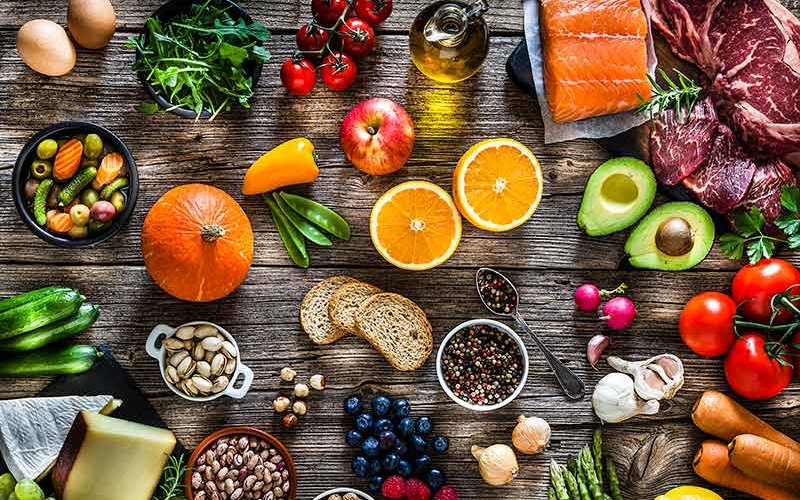
From sourdough starter and pandemic baking to contactless grocery shopping and virtual tip jars for restaurants on the fringe of survival, students in Sarah Grant’s new “Global Ethnographies of Food” class are seeing firsthand the complexities of food systems and food choices during the COVID-19 health crisis.
Students are being encouraged to think about the food supply chain, the labor that goes into producing their food, advertising and packaging, and ultimately, what they eat and why.
“When we see articles about farmers dumping milk, meat-processing plants shutting down and overwhelmed food banks, we might think about this not in terms of what ‘COVID-19 did’ to the food system, but rather how the coronavirus revealed an already broken food system in dramatic fashion,” explained Grant, a Cal State Fullerton assistant professor of anthropology.
“I’ve encouraged my students to think critically about food availability, an emergent culture of panic buying, and like all crises, how COVID-19 exacerbates underlying inequities around health, race and food access,” she said. “This was the direction our discussions were heading anyway, but COVID-19 catapulted these experiences into our purview.”
The pandemic also spurred impromptu class readings about wet markets, zoonotic transfer, “bat soup” commentaries and race.
“Anthropology, because of its interdisciplinary nature and ability to combine historical contexts with contemporary experiences, is especially well-positioned to question these commentaries and think carefully about discourses of blame and the everyday experience of the pandemic,” said Grant.
Developing a Class About Food
Grant, who joined the university in 2015, was excited to discover CSUF had recently launched a minor in food studies. She began to envision a food studies course that would challenge students to think beyond the “coolness” of the subject.
From “fake food” to “post-socialist food,” the class uses ethnographies of food to think through larger global issues of power, race, gender, class and climate change, among other topics. Some examples of class topics include instant noodles, the history of soybeans and milk in the Republic of China, artificial flesh and cultured meat, food insecurity and hunger.
“The question at the crux of my research and, really, guiding this class, is how food illuminates the vast spectrum of complex human experiences, whether we’re talking about rapid economic development, loss, anxiety or hope,” said Grant, whose research focuses on the coffee industry in Vietnam.
When the university shifted to online instruction amid the COVID-19 pandemic, Grant encouraged students to keep a “stay-at-home” food journal analyzing their daily food and food culture habits.
“The food journal asks students to think about what is or isn’t on grocery store shelves; how local businesses are adjusting to the pandemic; who does grocery shopping in the household; and how the pandemic has shifted consumption, cooking and eating habits,” she said. “I hope students will ‘see’ what they eat in a new light, but also think carefully about how the pandemic may change dietary habits, daily schedules and tie into our well-being in new ways.”
The Future of Food in America
As a critical food studies educator and researcher, Grant believes it is important to leave students with the tools to understand the pandemic and its long-term implications for those who were already hungry, malnourished and food insecure in America.
She notes that many universities, including CSUF, have campus food banks, pantries and basic needs programs. “Although I recognize how important it is to address student food insecurity during and after the pandemic, I think it’s equally important to question how and why we have hungry students at all,” said Grant.
“Despite supply chain breaks, most of us will make it through the pandemic well-fed. But those who were already struggling to feed themselves and their families will continue to struggle,” she said. “I hope the pandemic will be a wake-up call to think holistically about food justice and what we can do structurally to feed our communities with healthy, accessible food.”
While she’s seen glimmers of hope in her own community — consumers willing to share their resources with others, independently owned retailers helping to keep the neighborhood fed, and support for small-scale food sharing programs — Grant doesn’t see Americans transitioning to a farm-to-table utopia anytime soon.
“Even though people are sharing their citrus and avocados and learning how to bake bread, food scholars know that farm-to-table is not a universally applicable model,” explained Grant. “Not everyone can grow their own food, not everyone has an oven or a kitchen and not all local produce vendors accept CalFresh. The future of food in America, post-pandemic or not, only looks bright when we acknowledge these limitations and address them.”
In the meantime, Grant expects a slow recovery from the pandemic for farmers and seasonal laborers due to complicated supply chains, as well as shifts in the everyday experience of food shopping. Restaurants and other social food spaces, she says, will over time re-emerge as social gathering spaces.
“Food goes beyond nutrition and sustenance — it plays a significant social and cultural role in our lives,” she said. “We’ll be back to eating out and social occasions over food in due time, but I hope we do so with a mindfulness that considers what we value in food in terms of wages and benefits for those producing, transporting and serving it.”
Contact: Lynn Juliano, ljuliano@fullerton.edu